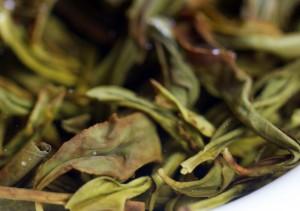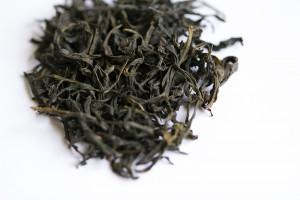As if having 2 types of Phoenix Dancong is not confusing enough- at least for some- we went out to get another one!
*In a sort of sneak preview, get used to it cos there will be more where that came from

For many markets that are used to “Phoenix Dancong’, “Dancong Oolong” and “Guangdong Oolong” alone, this can be a tad confusing.
To realign the nomenclature:
Phoenix here refers to Fenghuangshan (凤凰山), the township in Chaoan, Guangdong where the finest Dancong comes from.

Within the Fenghuangshan region, there are over a 100 “mother trees” with recognized names which can be grouped in 10 main grouped, based on their fragrance or “xiang” (香).
Hence at point of writing we have Mi Lan Xiang (蜜兰香) or Honey Orchid Fragrance and Tong Tiang Xiang (通天香) or Heavenly Fragrance which is from the Jiang Mu Xiang (姜母香) group or Ginger Flower Fragrance.
Just a little while ago, we brought in Xing Ren Xiang (杏仁香) or Almond Fragrance.
Here are a 2 “mother trees” from the Xing Ren Xiang family with interesting names:
Black Leaf Dancong (乌叶单丛)
Also known as “duck dung fragrance dancong” (鸭屎香单丛), yes, appetizing name isn’t it?
According to Mr. Wei Chun Se, his ancestors first cultivated this tree, because of the nutrients in the yellow soil, it had a smell somewhat akin to duck droppings.

It soon became a hit and neighbors starting asking for the source. Mr. Wei’s ancestor fearing it would be stolen- yes we Chinese are such cynics- quickly told his neighbors that it was “duck dung fragrance”, hoping the name would repulse any potential imitators.
No such luck though. Eventually it was cloned and grafted all over but a re-branding was in order. It became known as “black leaf dancong” after its darker leaves.
Lil’ Saw Teeth (锯剁仔)
So named after the shape of its leaves which resembled the teeth of a little saw, Lil’ Saw Teeth is one of the more popular Xing Ren Xiang clonal types.
In 1966, Ke Li Ze cloned the mother tree grown in Li Zai Ping Village- grown about 1150m above sea level in Mt Wudong (1 of the peaks in Fenghuangshan). Fortuitous timing though, the original tree died in 1970, having lived to a ripe old age of over 300 years.
It proved to be popular for its distinctive almond like fragrance and thick body. Its resilient and adaptable nature also proved to be perfect for Mt Wudong as it was cloned and cultivated all over Mt Wudong.
Xing Ren Xiang
Xing Ren Xiang is 1 of the 10 main fragrances of Dancong and together with Rou Gui Xiang (Cassia Fragrance) the only 2 to be named after herbs and spices.
It has the classic Dancong rich mouth feel and strong “hui gan” plus its unique fragrance.
It is especially distinctive when the dry leaves are shaken in a heated pot or gaiwan.
See Phoenix Dancong- Xing Ren Xiang in stores
See here for other articles related to varieties of oolong tea
